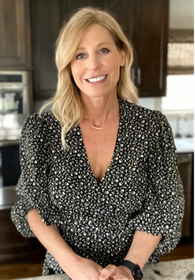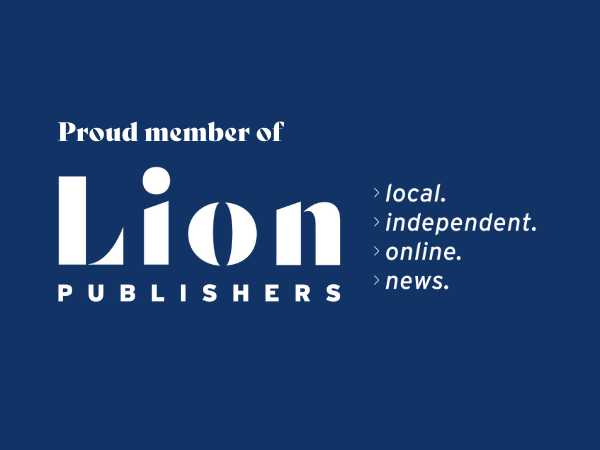|
|
May is National Arthritis Awareness Month. Arthritis is one of the most widespread health conditions in the United States. It currently affects over 53 million Americans and is expected to grow to over 67 million people by the year 2030. Arthritis is the leading cause of disability in the U. S. and it affects about one in four adults overall. The month of May is recognized each year as National Arthritis Awareness Month.
There are three major forms of arthritis: Osteoarthritis: Osteoarthritis (OA) is the most common form of arthritis. In OA the cartilage within a joint begins to breakdown and the underlying bone begins to change. It can cause pain, stiffness, and swelling. Osteoarthritis is usually caused by wear and tear of the cartilage that cushions the joints. Rheumatoid arthritis: Rheumatoid arthritis, or RA, is an autoimmune and inflammatory disease, which means that your immune system attacks healthy cells in your body by mistake, causing inflammation (painful swelling) in the affected parts of the body. RA mainly attacks the joints, usually many joints at once. RA commonly affects joints in the hands, wrists, and knees. Psoriatic arthritis: Psoriatic arthritis is a type of arthritis linked with psoriasis, a chronic skin and nail disease. Psoriasis causes red, scaly rashes and thick, pitted fingernails. Psoriatic arthritis is similar to rheumatoid arthritis (RA) in symptoms and joint swelling (inflammation). But it tends to affect fewer joints than RA. Although there is no cure for arthritis, there are lifestyle steps you can take to ease the pain and reduce further symptoms.
Spinach-Quinoa Bowls with Chicken and Berries Serves 2 Ingredients: 3 cups fresh baby spinach or mixed greens 1 cup cooked quinoa 2/3 cup chopped cooked chicken breast 1/2 cup fresh blueberries or sliced fresh strawberries 2 tablespoons crumbled feta cheese 1 tablespoon sliced almonds, toasted, unsalted 2 tablespoons extra-virgin olive oil 1 tablespoon white wine vinegar 14/ teaspoon Dijon mustard 1/2 teaspoon honey 1/2 teaspoon kosher salt Directions:
Calories 396, Fat 20 g, Protein 23 g, Carbohydrate 31 g, Fiber 6 g Recipe Source: Cooking Light Tracey Shaffer is a registered dietitian and certified health coach and owner of KC Nutrition Coach in Eastern Jackson County. She can be reached at [email protected]. You can visit her website at kcnutritioncoach.com.  by Tracey Shaffer, RDN, LD April is National Garden Month. Springtime is a perfect time to get our plants and garden ready. If you have never started a garden now is the time to start. A garden is a great place to teach kids valuable lessons while spending time together. And what kid doesn’t like to play in the dirt?
Growing a garden together can be easy with a few simple steps:
There are so many things to do with your garden harvest! Kids will love taking care of the plants and watching their garden grow. It is a great way to spend quality time with kids, teach them a new skill, and get them loving vegetables! If you need more information on gardening, contact your Local Extension Service office. Try these Mini Zucchini Pizzas for a veggie twist on pizza that kids will love. Mini Zucchini Pizzas Ingredients: Zucchini, sliced into rounds Pizza sauce Mozzarella cheese, shredded Fresh Parmesan cheese, shredded Olive oil Fresh basil Directions: Place sliced zucchini between paper towels to remove moisture for about an hour. Place the rounds on a parchment-lined cookie sheet and top a dollop of pizza sauce and shredded mozzarella and. Bake at 375° for 15-20 minutes until cheese is bubbly. Then drizzle with olive oil or top with fresh basil. Tracey Shaffer is a registered dietitian and certified health coach and owner of KC Nutrition Coach in Eastern Jackson County. She can be reached at [email protected]. You can visit her website at kcnutritioncoach.com. March is Colorectal Cancer Awareness Month. About 1 in 25 people in the United States will develop colon or rectal cancer at some point during their lifetime. If you are over the age of 45, getting screened regularly can prevent colorectal cancer but there are other lifestyle habits that may reduce your risk. The American Cancer Society recommends the following to lower your risk of colorectal cancer:
Studies have also shown that a calcium rich diet can make it less likely to have colon growths and colorectal cancer. Low and non-fat dairy products included in your diet may help reduce your risk. Whole grains and beans, due to their fiber content, B vitamins and phytochemicals and eating fatty fish such as salmon with omega-3 fatty acids can help slow the growth of cancer cells. Studies show that red meat (beef, pork, and lamb) and processed meats such has hotdogs, bacon and luncheon meats may raise your risk of developing colorectal cancer. It is recommended that less than 18 ounces of red meat be eaten weekly. Try this fiber packed recipe full of antioxidants for cancer prevention: Mediterranean Bean Salad Serves 8 Ingredients: 15 ounce can cannellini beans, drained and rinsed 15 ounce can garbanzo beans, drained and rinsed 1 cup cherry tomatoes, halved 2 small cucumbers, halved lengthwise and thinly sliced (do not peel) 1/4 red onion, thinly sliced 1/2 cup peppadew peppers, rough chopped 1/2 cup black olives, halved 1/2 cup pimento stuffed green olives, halved 1 cup assorted colorful bell peppers, diced 1/2 cup crumbled feta cheese 1/2 cup chopped marinated artichokes 10 large basil leaves, shredded Dressing: 1/4 cup extra virgin olive oil 4 tablespoons red wine vinegar 1 teaspoon dried Italian herbs 1 garlic clove, minced Salt and pepper to taste Instructions: Whisk the dressing ingredients together and taste to adjust any of them. Add more vinegar if you want a tangier flavor. Put the beans in a large salad bowl. Add the rest of the ingredients and toss with a generous amount the dressing. The salad will keep, well covered, for several days in the refrigerator. Tracey Shaffer is a registered dietitian and certified health coach and owner of KC Nutrition Coach in Eastern Jackson County. She can be reached at [email protected]. You can visit her website at kcnutritioncoach.com. Many of us start the day with a jolt of caffeine. In fact, according to the FDA, 80% of adults take in some form of caffeine daily. You have probably heard some of the negative effects of caffeine, but have you heard the positive? March is National Nutrition Month and National Caffeine Awareness Month, so it’s time to shed some light on the subject.
Caffeine is a natural stimulant and one of the most commonly used ingredients in the world. Although caffeine can cause negative effects on sleep and anxiety, there are also some health benefits. The following positive and negative effects from caffeine have been shown in several studies. The Positive*: Stimulates the brain Improves mood Improves alertness and short-term recall and reaction time May reduce the risk of Alzheimer’s disease and Parkinson’s disease May increase metabolism May enhance exercise performance Doesn’t raise the risk of heart disease May protect the liver Lowers risk of liver and colorectal cancers The Negative: Not appropriate for children and adolescents If consumed in the afternoon it could cause an interruption in sleep Mixing alcohol and caffeine is unsafe May lead to heartburn May cause increased anxiety in those who are sensitive to caffeine May temporarily increase heart rate and blood pressure *Some of the positive effects may be partly due to the bioactive compounds in coffee rather than the caffeine itself. So how much caffeine is good for you? Studies have shown that about 400 mg of caffeine per day can be beneficial. It is better to divide the 400 mg into two 200 mg doses. Pregnant women should limit their daily caffeine intake to less than 200 mg per day. Too much caffeine may cause headaches and high blood pressure. It may also cause anxiety, restlessness and trouble sleeping. Too much caffeine in pregnancy may increase the risk of miscarriage and low birth weight. Caffeine content of popular beverages per 8oz (240 ml): Espresso 240-200 mg Coffee 102-200 mg Energy drinks 50-160 mg Brewed tea 40-120 mg Soft drinks 20-40 mg Decaf coffee 3-12 mg Cocoa beverages 2-7 mg Chocolate milk 2-7 mg Whether you like it cold or hot, caffeine consumed in moderate amounts of no more than 200mg per dose with no more than 400 mg per day can be beneficial, so enjoy your morning java! Try this healthy iced coffee recipe. Healthy Iced Coffee Makes 3 servings 3 cups cold coffee or cold brew 3 cups low-fat or skim milk (or substitute your favorite dairy-free milk such as almond milk or coconut milk) Honey, maple syrup, agave or stevia to sweeten (optional) Helpful hint: you can freeze leftover coffee in ice cube trays for a quick and easy way to enjoy iced coffee. Just fill your tumbler with coffee ice cubes and add your favorite milk and sweetener Nutrition: 107 calories; 18 g carbohydrate; 9 g protein; 1g fat; 1 g saturated fat Tracey Shaffer is a registered dietitian and certified health coach and owner of KC Nutrition Coach in Eastern Jackson County. She can be reached at [email protected]. You can visit her website at kcnutritioncoach.com. There has been a lot of talk about eating to live a long and healthy life. So what does a longevity diet look like? Researchers have looked at Blue Zones to find the answer. These regions of the world are thought to have a higher than usual number of people living much longer than averages and have lower rates of chronic disease. In fact, studies have found that these areas contain extremely high rates of people who live longer than 90 and 100 years. Five areas have been categorized as Blue Zones: Sardinia (Italy); Icaria (Greece); Okinawa (Japan); Loma Linda Seventh Day Adventists (California); and Nicoya (Costa Rica).
Blue Zones place an emphasis on eating mostly plant foods – 3-10 cups of vegetables per day! They get most of their protein from beans, nuts, seeds and fish. They eat whole grains and a lot of fruits and vegetables. Blue Zone individuals eat a balanced diet focusing on seasonality and variety. Their diet is most similar to the Mediterranean diet. Blue Zone eating style:
Not ready for all of these changes to live longer? Start by picking the foods you enjoy and trying something new that you have never tried before. Diet is not the only thing that adds to these regions’ long lives. Daily movement, a feeling of belonging, and finding purpose also contribute to their longevity Mediterranean Grain Bowl Ingredients: 4 cups kale Juice of half a lemon 2 large sweet potatoes, skinned and chopped into 1-inch cubes Extra-virgin olive oil spray 1 ½ cup of cooked chickpeas, or one can organic chickpeas, drained ½ teaspoon each turmeric, coriander, and cumin ¼ teaspoon each smoked paprika garlic powder and cayenne 1 cup uncooked quinoa, well rinsed and drained 1 ¾ cups water ¼ teaspoon turmeric powder Sea salt to taste A pinch of fresh-ground black pepper ½ cup of Lemon Tahini Herb Sauce 2-3 tablespoons sunflower seeds, for garnish Dill, for garnish Lemon Tahini Herb Sauce ½ cup tahini 1-2 garlic clove, minced Juice of 1 small lemon ½ cup almond milk 2 tablespoons chopped dill Sea salt to taste Whisk together all ingredients Directions:
Tracey Shaffer is a registered dietitian and certified health coach and owner of KC Nutrition Coach in Eastern Jackson County. She can be reached at [email protected].  Tracey Shaffer, RDN, LD Written by Austin Hess, Dietetic Intern for KC Nutrition Coach Odds are you have seen the newest diet or product that claims to melt forty pounds off your body and eliminate all your health concerns. Some of you may have even tried it and seen some results. Unfortunately, the nature of these plans tend to be restrictive and eventually we break the rules for something we crave.
Intuitive eating is the exact opposite of this torturous cycle. It is not a diet but rather a mindset focused exclusively on how you feel and connecting you to your mind to your body’s needs. The following are ten principles to help teach you how to eat intuitively. 1. Reject Diet Mentality Get rid of the idea that weight loss, small bodies, and fads are the way to health. This is a constant physical, mental, and emotional strain on yourself. 2. Honor Your Hunger Eat when you are hungry! Its pretty simple yet something many of us deny. Start keeping healthy, satisfying snacks around for when you start to feel hungry. 3. Make Peace with Food Denying yourself food can lead to eventual cravings, bingeing, and guilt. Let yourself eat, it’s okay! 4. Challenge the Food Police There is no “good” or “bad” food, only food. Break free of that internal dialogue and you are on to a mentally healthier version of yourself. 5. Discover the Satisfaction Factor Eating is fun! Relearn that a good meal with good company is one of the greatest experiences we can have. Sit, eat, and enjoy. It's that simple. 6. Feel Your Fullness This one is a little more difficult as it is something we have probably been ignoring for a long time. Start with taking a moment during your meal and ask if you are full. Another good sign to watch for is the sigh of fullness (when your stomach is full you naturally sigh). Start paying attention to these signs and stop eating once you are full. 7. Cope with Your Emotions with Kindness Food can be a coping mechanism for certain emotions. Taking a breath to recognize why you are starting to eat can help you identify emotional eating. But restricting eating can be just as much of a mental/emotional burden. If you need a pick-me-up, feel free to eat a piece of chocolate, just be aware that food does not fix all problems. 8. Respect your Body Understand that not all of us are genetically built to look identical. We must stop comparing our bodies to others and begin respecting who and where we are. 9. Movement not Exercise Just move! Forget how many calories you are burning and start being cognizant of how the movement feels. Do you feel more energy? Do you feel better? Focusing on this versus how many calories you can burn in the shortest period, will help you enjoy movement more and keep it a constant in your life. 10. Honor Your Health Being “healthy” does not mean every piece of food that passes your lips has to be a super food. Consistency and progress are most important, not perfection. Intuitive eating can be summed up by enjoy all food by being mindful of yourself. You don’t need to be burdened with restrictive plans that rarely work. Start listening to your body, eating what you want and watch as your health follows. The muffin recipe below is a perfect snack option! Chocolate Zucchini Blender Muffins Servings: 10 muffins Ingredients:
Tracey Shaffer is a registered dietitian and certified health coach and owner of KC Nutrition Coach in Eastern Jackson County. She can be reached at [email protected]. May is Mental Health Awareness Month which is a time to recognize and support behavioral health care all year long.
Here are some facts and figures regarding mental health: 1 in 5 U.S. adults experience mental illness each year. 1 in 20 U.S. adults experience serious mental illness each year. 1 in 6 U.S. youth aged 6-17 experience a mental health disorder each year. 50% of all lifetime mental illness begins by age 14, and 75% by age 24. Suicide is the second leading cause of death among people aged 10-34. Although there is no conclusive evidence that a poor diet puts you at risk for a mental health disorder, there is plenty of evidence that suggests a healthy diet can help with symptoms of depression and anxiety. Even if you have a case of the blahs from dreary weather or staying at home too much, what you choose to eat can make a difference. Have you ever had a bad day at work and find yourself grabbing chocolate, alcohol, caffeine or “junk foods”? These foods can give you a quick energy boost and/or a temporary sense of calm, but may leave you with low energy and a low mood later on. Sweets and fats trigger the pleasure centers in the brain which is why when we are feeling down or having a lot of stress, we choose cookies over carrot sticks. A diet involving a high intake of red and processed meats, refined grains, sweets, high fat dairy products as well as a low intake of fruit and vegetables has been linked to higher levels of anxiety and depression. Conversely, a Mediterranean-style diet which has lots of vegetables, seafood, fresh herbs, garlic, olive oil, nuts and whole grains, can reduce the symptoms of depression. Keeping a balanced diet with a moderate and steady amount complex carbohydrates keep blood sugars consistent and less likely to negatively affect your mood. An example of a balanced meal would be a small sweet potato, a portion of fish or chicken, and fruits and vegetables which will nourish your body with vitamins, minerals and antioxidants and have also been shown to boost happiness. Over time, eating foods without a lot of nutrients can lead to nutritional deficiencies. Nutrients important to a healthy mood include: Folate Iron Long-chain omega-3 fatty acids (EPA and DHA) Magnesium Potassium Selenium Thiamine Vitamin A Vitamin B6 Vitamin B12 Vitamin C Zinc Try this Spanish Garlic Shrimp recipe to boost your mood. Add a green vegetable and whole grain crusty bread to make it complete. Tracey Shaffer is a registered dietitian and certified health coach and owner of KC Nutrition Coach in Eastern Jackson County. She can be reached at [email protected]. You can visit her website at kcnutritioncoach.com. Mother’s Day is Sunday, and what better way to celebrate Mom than with a healthy and delicious meal.
Ideas for Mother’s Day fit for a queen: Breakfast in bed. Pamper Mom by letting her sleep in and enjoy a fresh cooked breakfast in bed. Whip up a nutritious breakfast with all the food groups. A good source of protein is an omelet with Mom’s favorites. Some good choices are asparagus and salmon, ham and bell peppers or a vegetarian omelet with mushrooms, spinach, and some sliced grape tomatoes. Add a piece of whole grain toast and some sliced strawberries and you have a complete meal. Don’t forget the coffee! Adorn her tray with some fresh flowers and a homemade card letting her know how much she means to you and you are bound to put a smile on her face. Let young kids get involved in the kitchen with supervision. They can stir the eggs, set up the tray and toast the bread. Make it brunch. If Mom isn’t much for an early breakfast, serve her up a yummy brunch. Some quick and easy choices are whole grain banana pancakes, a breakfast casserole assembled the night before and some smoked salmon and avocado toast. Serve a mimosa on the side to make it special. Dine in for dinner. If dining out isn’t her style, bring the restaurant to her with some candlelight, a beautifully set table and a glass of wine. Try the recipe below for a delicious and easy Mother’s Day entrée. Add a piece of angel food cake with some sliced strawberries and a dollop of fresh whipped cream for a light and satisfying dessert. Whatever you choose to do for Mom, the effort and thoughtfulness won’t go unnoticed and it lets her know you care. Tracey Shaffer is a registered dietitian and certified health coach and owner of KC Nutrition Coach in Eastern Jackson County. She can be reached at [email protected]. You can visit her website at kcnutritioncoach.com. National Picnic Day is celebrated on April 23. Whether it’s an outdoor family excursion or a romantic day in the park for two, picnics make being outdoors just a little more special. And if the weather isn’t ideal just have a picnic on your living room floor!
To plan a perfect picnic, you will want to choose foods you can make ahead of time that store well and are easy to eat. Tips for a perfect picnic Pick a good container. A good insulated cooler is the best option to keep foods cool enough to avoid food borne illness. Make sure to add ice or freezer packs. Keep hot foods hot by keeping them in an insulated thermos. Don’t let food set out for more than two hours or more than one hour if the temperature outdoors gets really hot. Keep it clean. Keep both your hands and the environment clean. Bring some napkins, wet wipes and some trash bags to keep things tidy. Don’t forget the beverage. Iced tea, fruit infused water or a bottle of wine are all good choices. Make it healthy. Sandwiches make an easy-to-pack picnic food. To keep your sandwich healthy, choose whole-grain bread and pack a healthy dip such as guacamole or hummus to dip some fresh cut veggies. Fresh fruit packs easily. Some good choices are grapes, strawberries and fresh cut melon. Don’t forget the treat. A cookie or other sweet treat can make your picnic complete without feeling deprived. Try this Vegetarian Mediterranean Pressed Picnic Sandwich at your next picnic. Add some grilled chicken if you want to add a non-vegetarian protein source. Tracey Shaffer is a registered dietitian and certified health coach and owner of KC Nutrition Coach in Eastern Jackson County. She can be reached at [email protected]. You can visit her website at kcnutritioncoach.com. by Tracey Shaffer, RDN, LD  March is National Nutrition Month®, which is an annual campaign created by the Academy of Nutrition and Dietetics. During the month of March, everyone is invited to learn about making informed food choices and developing healthful eating and physical activity habits. This year’s theme is “Personalize Your Plate.” There is not just one way to approach your nutrition and health. All bodies are unique and we all have different tastes and different goals which we are trying to achieve with our health and wellness. A Registered Dietitian Nutritionist (RD/RDN) can help you achieve your optimal health and reach your goals. The following are some guidelines to get you started on healthy eating. Eat a Variety of Foods Make sure you include foods from all food groups and hydrate yourself healthfully without added sugars. Learn how to read the Nutrition Facts Panel so you can increase your knowledge of what is in the food you are eating. Avoid distractions while eating so that you can focus on your food and enjoy the company you are with. Choose healthful food that you enjoy. Plan Your Meals Healthy eating is much easier when you have a plan in place. Pick one day of the week to do your grocery shopping and shop from a list. Check out menus before you go to restaurants so that you have a chance to make a good decision before you get there and may be tempted by other items. Enjoy healthy snacks by stocking your refrigerator with lean protein, fruits and vegetables. Learn Skills to Create Tasty Meals Start with a simple recipe and build your skills. Watch a cooking show, or take a cooking class if you need help with the basics. Find a friend or relative who is a good cook to help get you started. Consult a Registered Dietitian Nutritionist (RD/RDN) If you need specific advice and don’t know where to turn, don’t rely on a friend, relative or the internet. Get professional guidance from a nutrition expert so you know the information you are getting is reliable. Find a RD/RDN who can meet your unique needs. Try this healthier twist on a Saint Patrick’s Day favorite. |
Categories
All
Archives
July 2024
|
Grain Valley NewsGrain Valley News is a free community news source published weekly online. |
Contact Us |













 RSS Feed
RSS Feed
